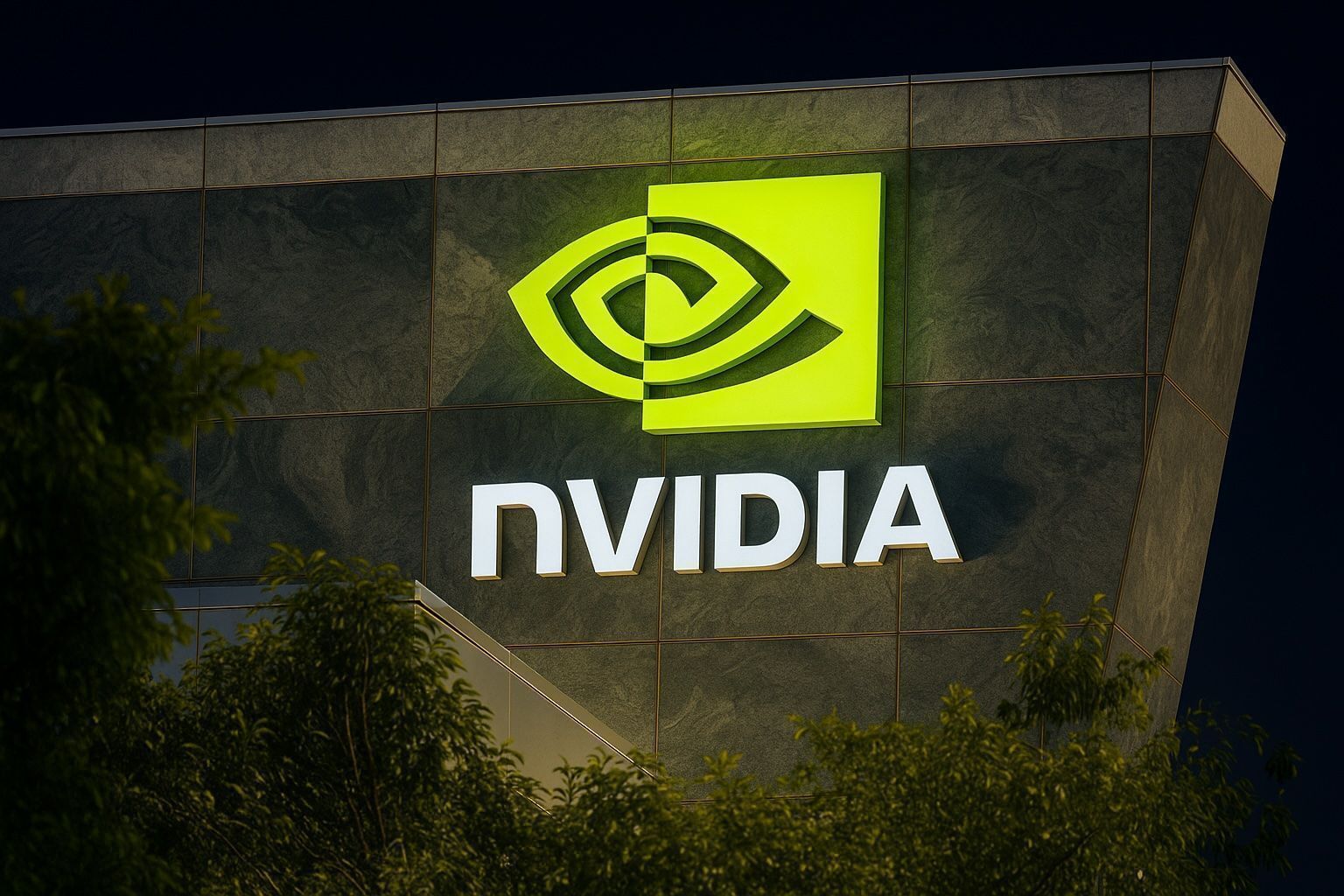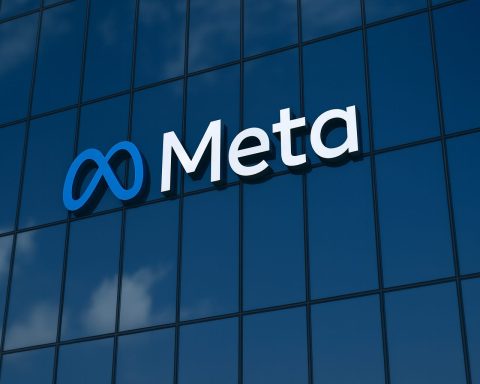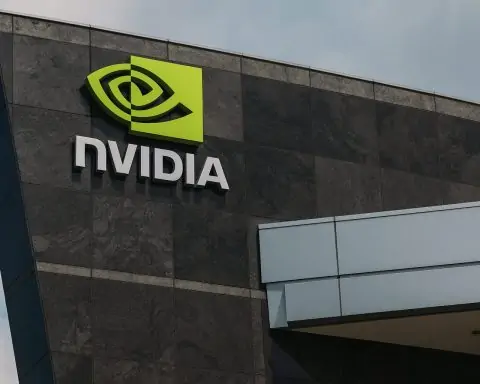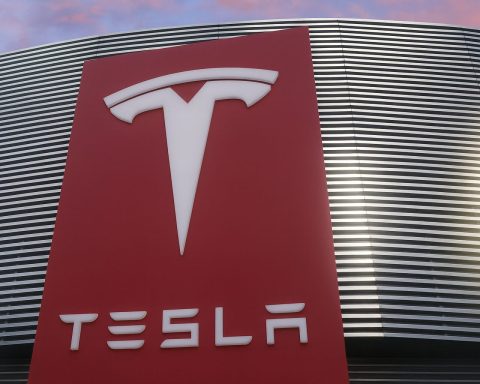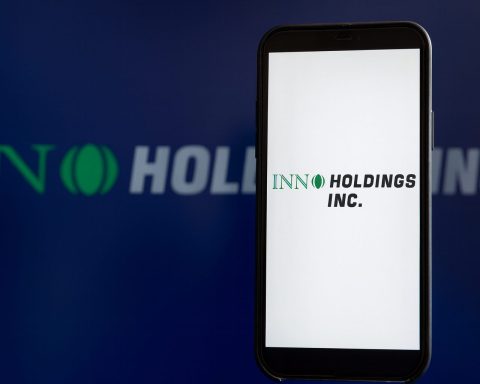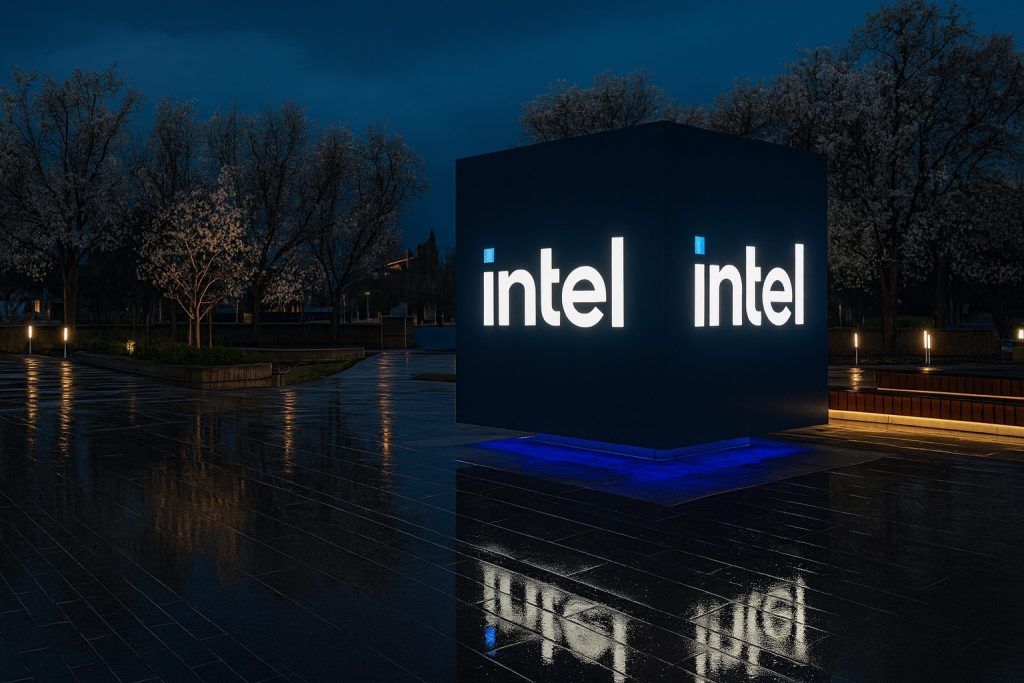- Stock snapshot (Oct 6 2025) – Nvidia shares closed at $187.62 on Oct 3 (Oct 6 pre-market price ~$184.80) as the stock consolidated near record highs [1]. The company’s market capitalisation stood above $4.5 trillion, with about 24.3 billion shares outstanding [2] [3]. Analysts’ consensus price target around Oct 2025 averaged $206–211, implying high-single‑digit upside from current levels [4].
- Financial strength – In fiscal Q2 2026 (quarter ended Jul 27 2025), Nvidia reported revenue of $46.7 billion (up 56 % year over year) and data‑center revenue of $41.1 billion, with GAAP gross margin of 72.4 % [5]. Net income reached $86.6 billion for the trailing twelve months [6]. The company ended the quarter with $56.79 billion in cash and a debt/equity ratio of 0.11 [7] [8].
- AI deal frenzy – Nvidia shocked markets in September by committing to invest up to $100 billion in OpenAI for non‑voting equity while delivering 10 gigawatts of AI infrastructure over several years [9]. The move spurred warnings from analysts about a “profit problem” – the risk that Nvidia’s massive investments into customers like OpenAI simply recycle cash back through chip sales [10]. AMD’s competing deal to supply 6 GW of MI450 GPUs to OpenAI (announced Oct 6) gave OpenAI an option to buy up to 10 % of AMD and will generate tens of billions in revenue for AMD [11].
- Earnings guidance – Nvidia expects Q3 FY2026 revenue around $54 billion (±2 %) with GAAP gross margin of roughly 73 % [12]. Analysts forecast fiscal 2026 revenue surpassing $200 billion, underpinned by data‑center demand and AI PC growth [13].
- Valuation metrics – NVDA traded around 53× trailing earnings, 33× forward earnings, and an enterprise‑value‑to‑free‑cash‑flow ratio of 62.7 [14] [15]. The stock had gained ~58 % over the previous 12 months [16] and its beta of 2.12 indicated high volatility [17].
- Consensus view – MarketBeat listed 41 buys, 4 holds and 1 sell among 46 analysts, with a consensus price target of $211.26 (≈12 % upside) and a high target of $250 [18]. Loop Capital’s analysts called Nvidia the leader of the generative‑AI “golden wave” and raised their price target to $250 [19].
Recent News (Late Sept – Oct 6 2025)
AMD–OpenAI Partnership Challenges Nvidia’s Dominance
Reuters and technology outlets reported on Oct 6 that AMD signed a multi‑year deal to supply hundreds of thousands of AI GPUs (6 GW) to OpenAI. The deal gives OpenAI an option to buy up to 10 % of AMD. AMD expects tens of billions of dollars annually from the partnership and more than $100 billion of revenue over four years [20]. TweakTown added that the contract uses milestone‑based stock vesting, with the first gigawatt of GPUs arriving in the second half of 2026 [21]. The announcement came less than two weeks after Nvidia pledged to invest up to $100 billion in OpenAI and supply 10 GW of GPU systems [22].
Analysts noted that AMD’s move intensifies competition in the AI chip market. Reuters said Nvidia shares dipped 2 % after the AMD‑OpenAI deal, reflecting fears of pricing pressure and more players in AI hardware [23]. Another Reuters piece warned that such circular deals (investments in customers that loop back as chip orders) raise profit‑quality concerns [24]. An AInvest column dubbed this the “profit problem” and highlighted a “power problem”, noting that MIT researchers found AI chips consume enormous energy and generate heat, potentially limiting expansion [25].
AI Frenzy Lifts Semiconductor Stocks—and Bubble Warnings Surface
TS2 Tech reported that a renewed AI frenzy added over $200 billion to chip stocks in early October, sending Nvidia and AMD shares to record levels as investors feared missing out (FOMO) [26]. Catalysts included OpenAI’s new video‑generation tool and partnerships with Samsung and SK Hynix; these eased worries about Nvidia’s $100 billion OpenAI investment [27]. Analysts at Melius Research predicted that Nvidia could generate over $600 billion in free cash flow over the next 3–4 years and that CEO Jensen Huang would reinvest most of it to build an AI ecosystem rather than pursuing large buybacks [28]. However, TS2 cautioned that valuations were historically high, the rally was fueled by FOMO, and supply constraints in high‑bandwidth memory could impede growth [29].
Another TS2 article summarised Nvidia’s record run: the stock closed at $186.58 on Sept 30, pushing its market cap above $4.5 trillion and making it the world’s most valuable company [30]. The piece credited the rally to a flurry of deals (OpenAI’s $100 billion commitment, a $5 billion stake in Intel [31], and the UK AI factory programme) along with analysts raising price targets to $210–250 [32]. At the same time, the article pointed out risks like high P/E ratios, potential regulatory scrutiny in China, energy consumption concerns and the circular profit issue [33].
Financial Results and Guidance
Nvidia’s Q2 FY2026 results (released Aug 25 2025) exceeded analysts’ expectations with revenue up 56 % YoY to $46.7 billion and net profit margin over 50 % [34]. Data‑center revenue comprised $41.1 billion and gaming/AI‑PC revenue jumped 49 % YoY to $4.3 billion, reflecting strong demand for AI‑enabled gaming chips [35]. Nvidia’s PC business recorded $8.1 billion in revenue in the first half of fiscal 2026 and is on track for $16 billion for the full year; analysts at The Motley Fool believe gaming and AI‑PC revenue could exceed $50 billion within five years [36].
Nvidia repurchased $24.3 billion of stock and returned $25.5 billion to shareholders in Q2, showing management’s willingness to deploy cash. The company initiated a new $60 billion buyback authorisation and maintained a token dividend of $0.04 per share [37] [38]. It guided for Q3 revenue of $54 billion (±2 %) with GAAP gross margins of around 73 % [39].
New Products and Investments
In September Nvidia announced the Rubin CPX chip architecture for generative video and software models. The chip integrates video decoding/encoding and inference, allowing AI models to process long videos and generate code and graphics, which Nvidia believes will enable new business models such as selling AI “tokens”; a one‑million‑token model might yield $5 billion of revenue from a $100 million investment [40].
On Sept 18 Nvidia took a $5 billion (~4 %) stake in Intel, agreeing to co‑develop multiple generations of PC and data‑center chips. The partnership is seen as a lifeline for Intel and could create more integrated CPU–GPU products; analysts warn it may pose risks to TSMC and AMD [41]. Loop Capital raised its price target to $250 and described the AI boom as a “golden wave”; Reuters reported that NVDA traded at about 30× forward earnings, below its 5‑year average of 40, making valuations appear less frothy [42].
Nvidia also announced new AI factories in the UK and collaborated with the UAE to build an AI data center; these projects could deploy tens of thousands of GPUs and are backed by government funding [43]. Such infrastructure deals are critical to maintain Nvidia’s leadership but raise concerns about geopolitical risk and the environmental footprint of giant data centers [44].
Expert Commentary and Criticism
- Profit problem & bubble warnings – An AInvest article warned that Nvidia’s heavy investments in customers like OpenAI create a circular revenue loop that undermines real profitability and may be unsustainable [45]. The same piece highlighted research from MIT showing that AI chips are energy‑hungry, suggesting scaling AI could be constrained by power consumption [46].
- Analysts on FOMO – TS2 Tech noted that FOMO had returned to AI stocks, with investors chasing deals despite lofty valuations, while cautioning that supply constraints and high‑bandwidth memory shortages could curb growth [47].
- Price targets & valuations – MarketBeat shows that the highest analyst target for NVDA is $250, while the lowest is $120 [48]. Loop Capital and Melius Research maintain bullish stances, emphasising generative‑AI adoption and free‑cash‑flow potential [49] [50]. In contrast, some value‑oriented analysts see intrinsic value around $138 per share and caution against overpaying [51].
- Insider Selling & Regulatory Risks – Reuters reported that Nvidia insiders sold over $1 billion in stock over the past year, with CEO Jensen Huang selling shares in June as the stock reached record highs [52]. Analysts view the sales as profit‑taking but caution that high valuations expose the stock to sharp corrections. There is also risk of antitrust scrutiny: a TIME op‑ed argued that Nvidia’s investment in OpenAI and vertical integration in AI could entrench a few tech giants and called for regulators to break up “Big AI” [53].
Broader Industry Context
The AI and semiconductor landscape has shifted rapidly. Global data‑center capital expenditure is projected to rise from $600 billion in 2025 to $3–4 trillion by 2030, according to Nvidia CEO Jensen Huang [54]. Analysts at The Motley Fool suggest that if Nvidia maintains its dominant 90 % share of data‑center GPUs, the company could generate $1.17 trillion in revenue and $583 billion in profit by 2030, implying a market cap exceeding $14 trillion [55]. Nvidia’s gaming and AI‑PC business continues to grow, with management expecting the discrete GPU market to expand at a 25 % compound annual growth rate, potentially adding $60 billion in revenue over five years [56].
Competitive pressures are rising. AMD is introducing its MI400‑series GPUs and forging partnerships with OpenAI, Cohere and Intel [57] [58]. Intel is collaborating with Nvidia and investing heavily in foundry capacity; other hyperscalers (Microsoft, Google, Amazon, Meta) design their own chips. Analysts believe Nvidia’s massive size and developer ecosystem still give it a huge advantage, but high valuations and regulatory scrutiny (including Chinese probes into GPU suppliers) create headwinds [59].
Conclusion: Navigating Opportunity and Risk
Nvidia in October 2025 is the undisputed leader in AI computing. It dominates data‑center GPUs, invests billions in customers and partners, and continues to innovate with new chips like Rubin CPX. Its Q2 results and guidance show robust growth, and analysts largely expect the AI boom to continue. However, investors should weigh valuation risk, energy consumption constraints, regulatory headwinds and the possibility that circular deals could mask the true economic return. With consensus price targets clustered around $206–211 and high expectations baked in, Nvidia remains a high‑beta stock where fortunes could swing based on AI adoption, supply chain execution, and regulatory developments.
In summary, NVIDIA’s continued dominance in the AI semiconductor market is evident from its massive market cap exceeding $4.5 trillion and its strong fiscal 2026 Q2 results, which saw revenue surge 56 % year over year to $46.7 billion [60]. The company maintains a commanding share of data-center GPUs, fuelling optimism that forthcoming products like the Rubin CPX chip will unlock new revenue streams through advanced video and software generation capabilities [61]. Analysts remain broadly bullish with consensus price targets hovering around $206–211, but caution that the stock’s lofty valuation (over 50× earnings) exposes investors to volatility [62].
The report also underscores emerging competitive and regulatory headwinds. AMD’s multibillion-dollar deal to supply OpenAI with 6 gigawatts of GPUs and Intel’s $5 billion partnership with NVIDIA highlight intensifying rivalry and complex supply-chain alliances [63]. Meanwhile, critics warn of a “profit problem” stemming from circular deals, rising energy consumption, and the possibility of antitrust scrutiny [64]. As AI-related demand surges, NVIDIA’s future hinges on balancing aggressive expansion with prudent risk management.
References
1. stockanalysis.com, 2. stockanalysis.com, 3. stockanalysis.com, 4. www.marketbeat.com, 5. nvidianews.nvidia.com, 6. stockanalysis.com, 7. stockanalysis.com, 8. stockanalysis.com, 9. www.reuters.com, 10. www.ainvest.com, 11. www.reuters.com, 12. nvidianews.nvidia.com, 13. 247wallst.com, 14. stockanalysis.com, 15. stockanalysis.com, 16. stockanalysis.com, 17. stockanalysis.com, 18. www.marketbeat.com, 19. www.reuters.com, 20. www.reuters.com, 21. www.tweaktown.com, 22. www.reuters.com, 23. www.reuters.com, 24. www.reuters.com, 25. www.ainvest.com, 26. ts2.tech, 27. ts2.tech, 28. ts2.tech, 29. ts2.tech, 30. ts2.tech, 31. www.reuters.com, 32. ts2.tech, 33. ts2.tech, 34. nvidianews.nvidia.com, 35. www.fool.com, 36. www.fool.com, 37. stockanalysis.com, 38. ts2.tech, 39. nvidianews.nvidia.com, 40. www.reuters.com, 41. www.reuters.com, 42. www.reuters.com, 43. ts2.tech, 44. 247wallst.com, 45. www.ainvest.com, 46. www.ainvest.com, 47. ts2.tech, 48. www.marketbeat.com, 49. ts2.tech, 50. www.reuters.com, 51. 247wallst.com, 52. www.reuters.com, 53. time.com, 54. www.fool.com, 55. www.fool.com, 56. www.fool.com, 57. www.reuters.com, 58. ts2.tech, 59. ts2.tech, 60. nvidianews.nvidia.com, 61. www.reuters.com, 62. www.marketbeat.com, 63. www.reuters.com, 64. www.ainvest.com
